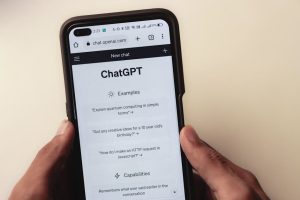The Critical Role of VoLTE Roaming in a Post-3G World

The End of 3G: Shaping the Future of Mobile Communication
The global shutdown of 3G networks was heralded as a technological milestone, paving the way for the widespread adoption of LTE and 5G standards. Designed to deliver faster data speeds and a more efficient architecture, this transition was meant to simplify the mobile experience for everyone. However, for international travelers trying to make voice calls, the reality has proved to be far more complex. The retirement of 3G not only impacted outdated internet speeds, but it also eliminated the fallback network that previously supported voice calls when LTE wasn’t available. This significant yet often-overlooked change has made VoLTE roaming a crucial element for maintaining seamless communication abroad.
What is VoLTE Roaming and Why Does It Matter?
To truly understand VoLTE roaming, it’s worth taking a brief look back. Before the advent of VoLTE (Voice over LTE), mobile phones relied on 3G or even 2G networks to carry voice calls. While this switchback mechanism allowed calls to go through reliably, it also tethered voice communication to older, less efficient networks. With the 3G shutdown, this mechanism disappeared. Now, phones and networks must both support VoLTE roaming to ensure that voice calls can be made abroad. Without it, travelers may find themselves stuck with data-only coverage—a concerning reality when attempting critical tasks such as calling a hotel, a bank, or local emergency services.
Unlike standard VoLTE, which operates within your home network, VoLTE roaming ensures that voice calls remain on LTE networks even when users are connected to partner networks in foreign countries. This technology eliminates the dependency on older systems like 2G and 3G, providing clearer call quality and faster connection times. However, implementing VoLTE roaming is not automatic. It requires collaboration between operators, technical compatibility (including codecs and signalling routes), and mutual agreements between networks. Without these, users could find themselves unable to make traditional voice calls.
The Challenges of VoLTE Roaming Adoption
One might assume that by 2025, global telecom providers would have universally adopted VoLTE roaming. Yet, many gaps remain. Coverage is inconsistent, with business travelers and tourists often encountering situations where VoLTE works seamlessly in one country but fails entirely in another. For example, a German traveler might experience excellent VoLTE roaming in the United States but struggle with data-only access in Japan due to lack of agreements between their home carrier and local providers.
This uneven implementation reflects ongoing challenges in standardization and collaboration. The GSM Association (GSMA) has worked to address these issues through specifications like IR.65 and IR.92, designed to standardize VoLTE roaming profiles and streamline interoperability. While large, Tier-1 operators increasingly recognize VoLTE roaming as a service expectation, smaller carriers may still lag behind. This makes it critical for users to verify their carrier’s VoLTE roaming agreements before embarking on international travel.
Why Native Voice Calling Still Matters in the Age of Apps
Despite the popularity of OTT (over-the-top) messaging and calling apps such as WhatsApp, Zoom, and Teams, the need for reliable native voice calling remains paramount. These apps often depend on stable internet connections and data allowances, which may not always be accessible or practical in certain scenarios. VoLTE roaming ensures that users can make hassle-free voice calls under any conditions, making it integral to business communications, banking needs, and urgent situations. In short, native voice roaming fills a gap that even the most advanced apps cannot fully address.
Preparing for International Travel in the Post-3G Era
The 3G shutdown marked a shift toward a more complex, interconnected mobile infrastructure reliant on VoLTE roaming. For most travelers, this shift has created both opportunities and frustrations. On one hand, VoLTE offers enhanced call quality and faster connection times; on the other, its availability remains inconsistent.
To ensure a smooth experience while traveling abroad, users should verify their carrier’s VoLTE roaming agreements in advance, keep VoLTE enabled on their devices, and remain mindful that LTE coverage alone does not guarantee traditional voice calling functionality. By staying informed, travelers can minimize disruptions and maintain reliable communication no matter where their journey takes them.




